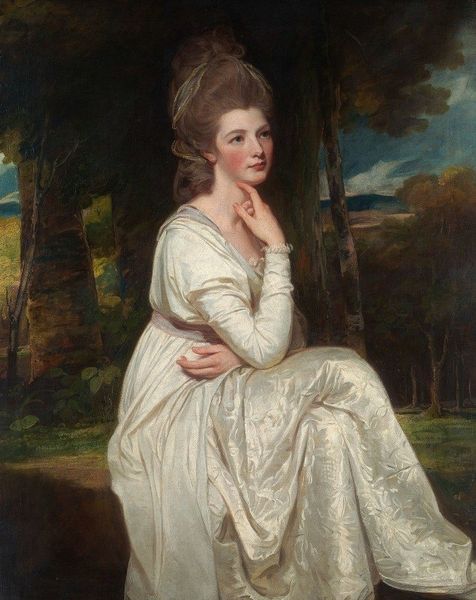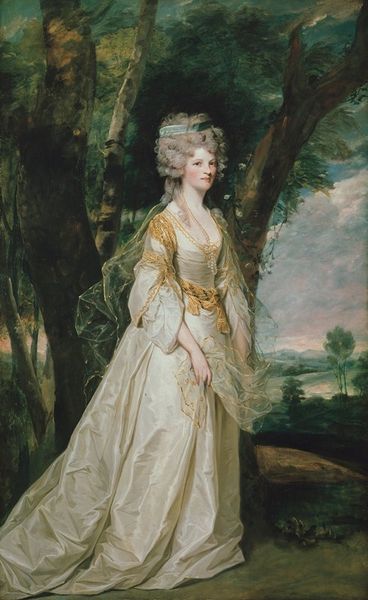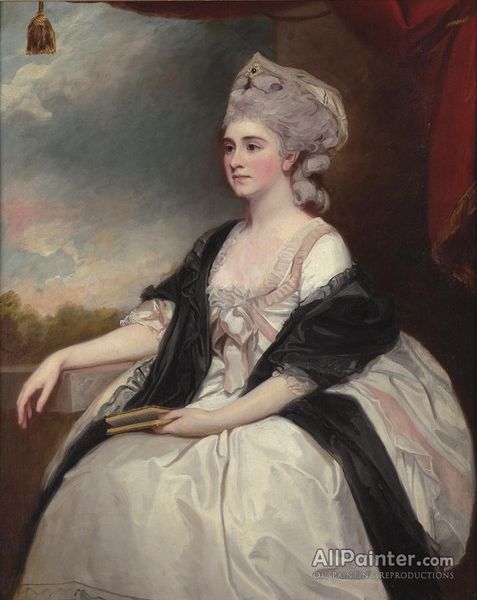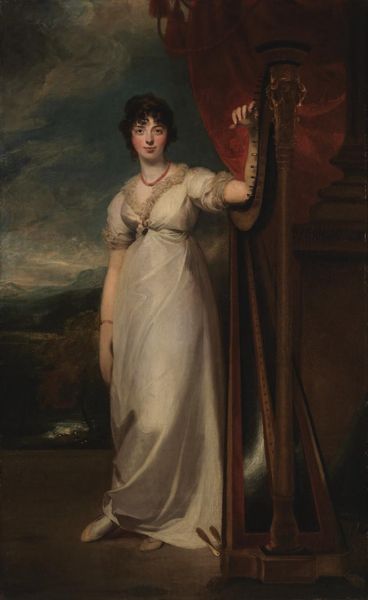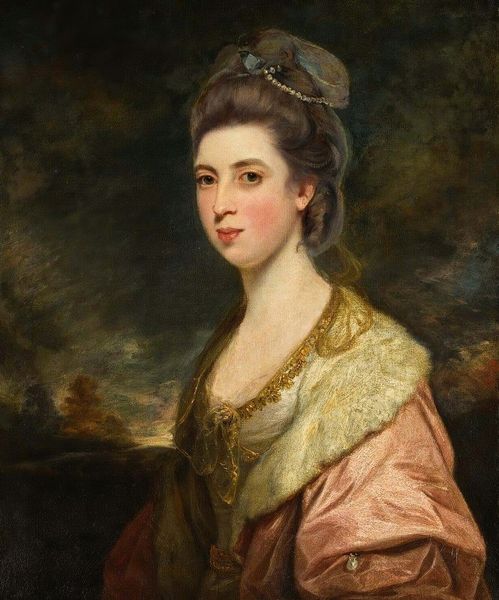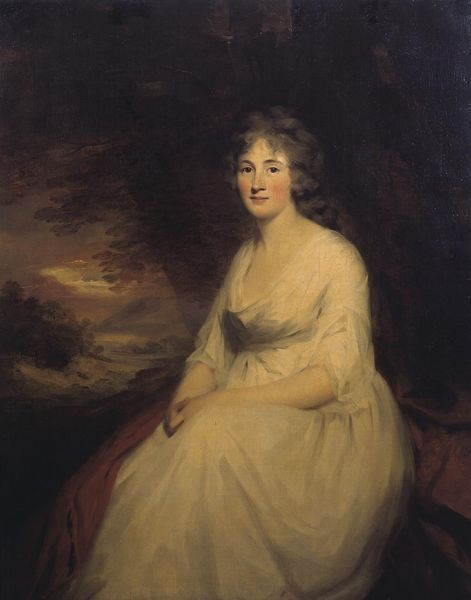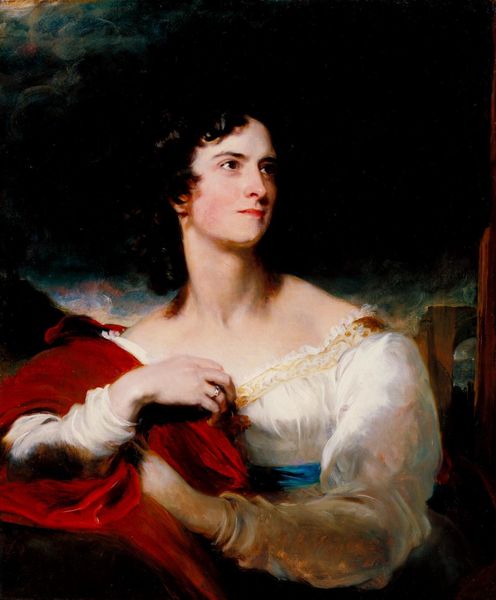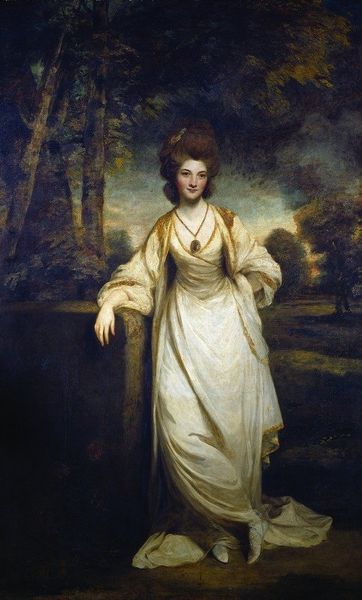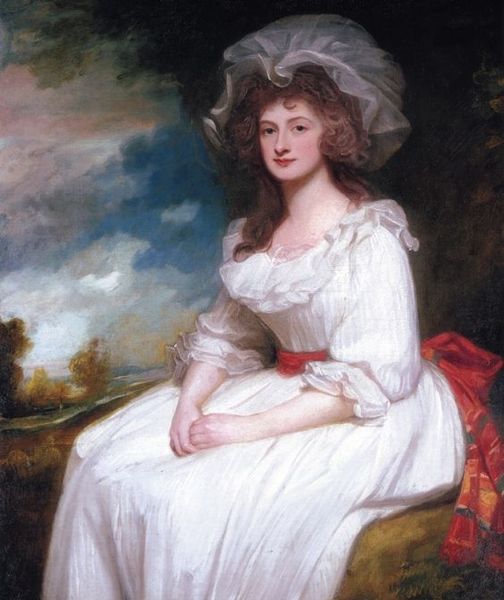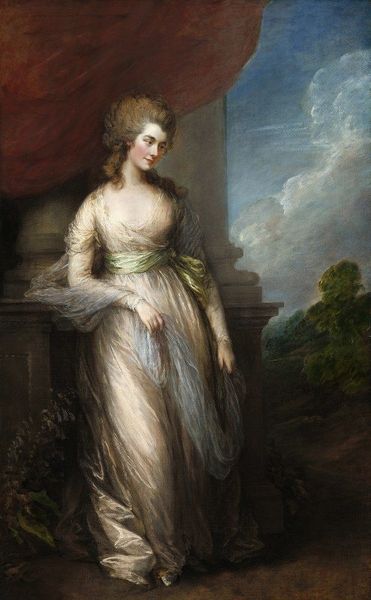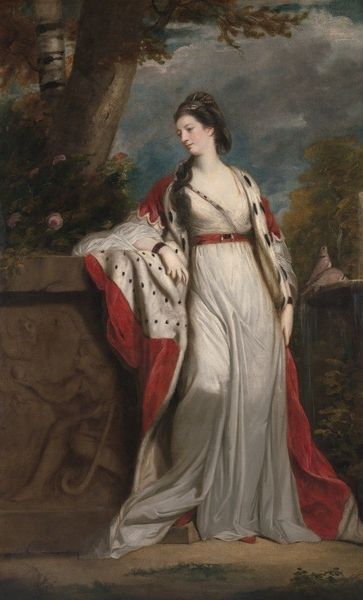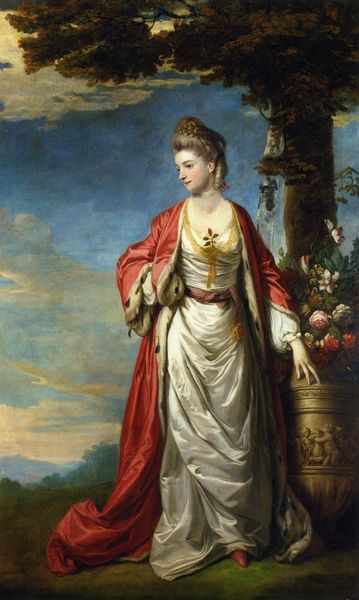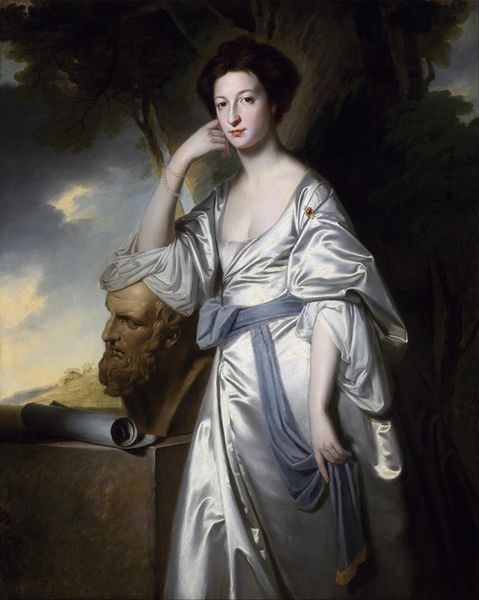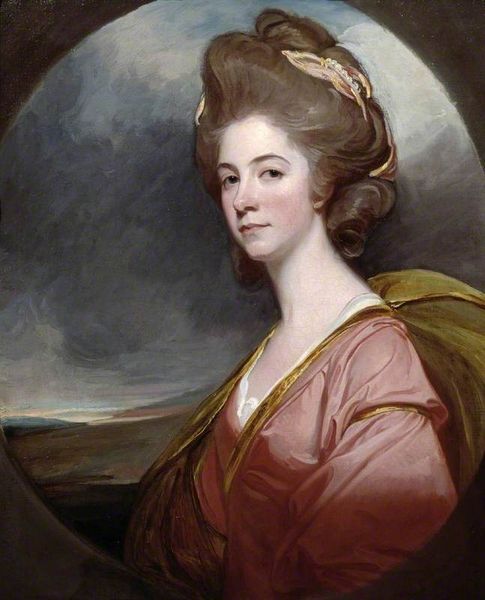
Dimensions: support: 2343 x 1460 mm frame: 2825 x 1880 x 133 mm
Copyright: CC-BY-NC-ND 4.0 DEED, Photo: Tate
Editor: Here we have Sir Joshua Reynolds’s "Lady Talbot," currently residing at the Tate. It's quite a grand portrait, the way she's draped and posed. What strikes you about its composition? Curator: Observe how Reynolds employs a pyramidal structure, stabilizing the figure of Lady Talbot within the canvas. Note the dynamic interplay between the cool, muted tones of her gown and the warm, theatrical reds of the surrounding drapery. Editor: I see, the colors really do frame her. It almost feels like she's on a stage. Curator: Precisely. The light, diffused yet directional, sculpts her form, emphasizing the texture of the fabrics. The brushstrokes themselves, loose and visible, contribute to a sense of immediacy. It almost invites us to examine the brushwork. Editor: So, it's not just about who she is, but how it's all put together? Curator: Indeed. The painting's power lies in its formal arrangement of elements; this reveals the artist's skill. Editor: That really changes how I see it. I appreciate the focus on the pure visual elements. Curator: And I, your engagement with the historical context provides a richer appreciation.
Comments
Join the conversation
Join millions of artists and users on Artera today and experience the ultimate creative platform.
tate 8 months ago
⋮
Dressed in a robe inspired by Grecian dress, the sitter is shown pouring oil onto burning coals in a sacrificial tribute to the Roman goddess Minerva, associated with wisdom and the arts. The richly textured painted surface and striking colour scheme recall the work of the Venetian Renaissance painter Titian. Reynolds wanted his portraits to be esteemed as a form of painting as artistically ambitious as the work of such universally admired masters. It was exhibited at the Royal Academy’s annual exhibition in 1782, and engraved in mezzotint, ensuring that the image circulated far beyond aristocratic circles. Gallery label, February 2016
